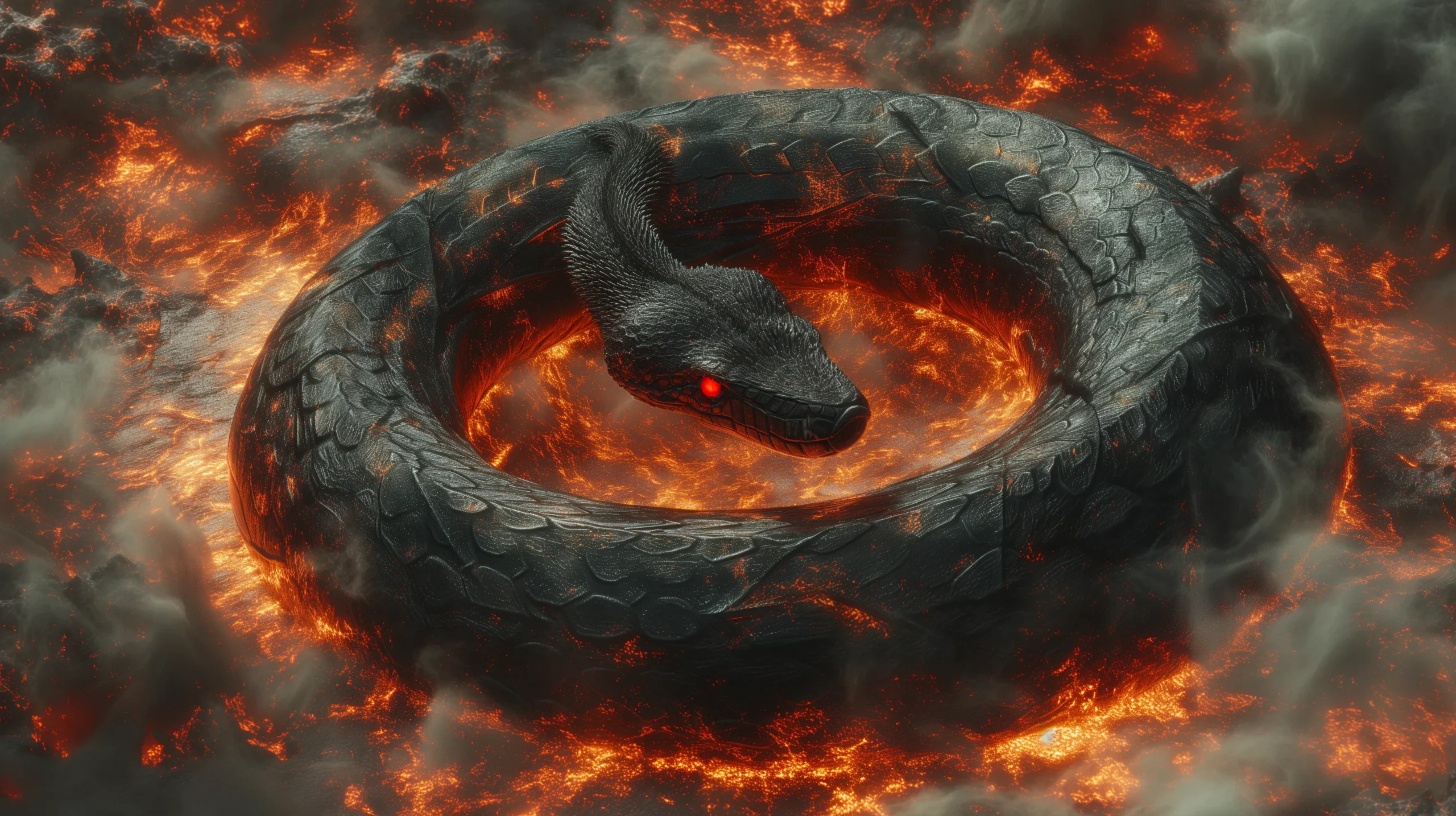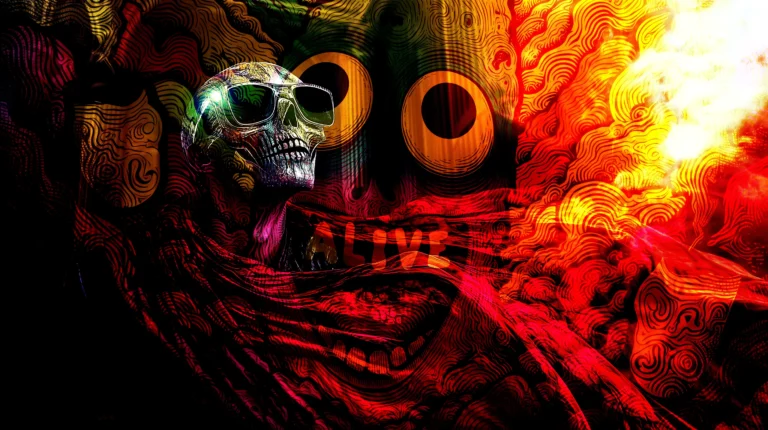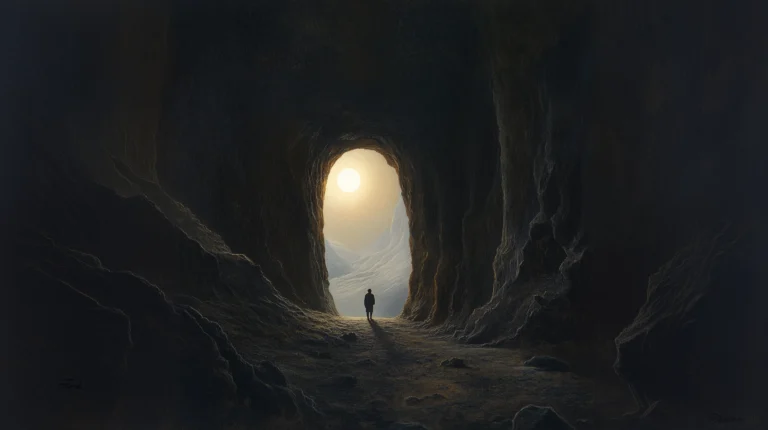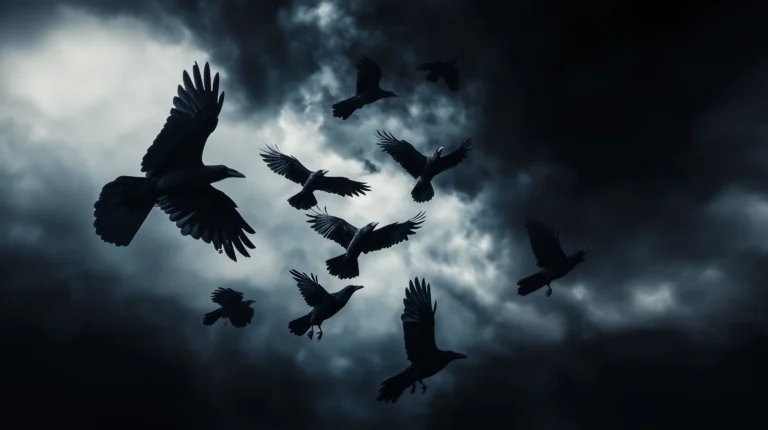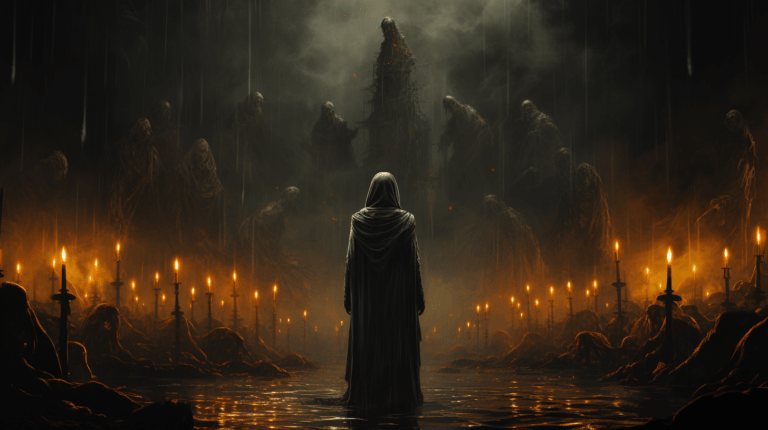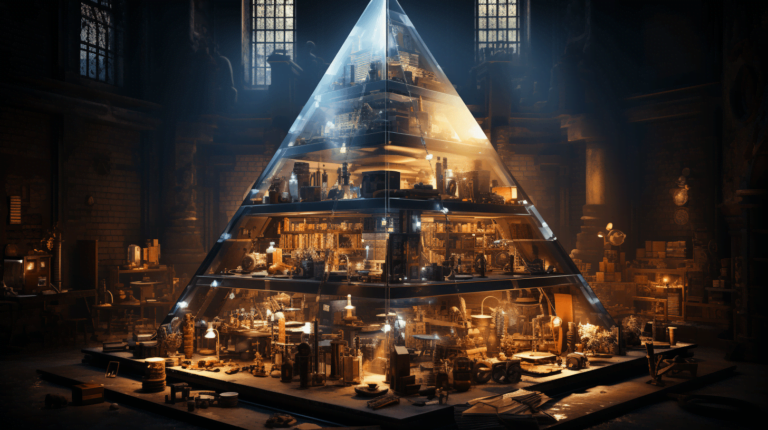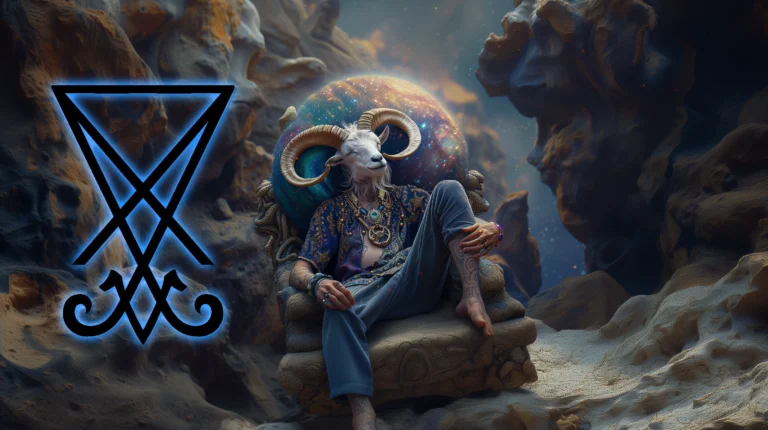Ascending the Spiral: Embracing the Ouroboros Within
Ascending the Spiral
Embracing the Ouroboros Within
The Ancient Roots of the Ouroboros
The ouroboros, an enigmatic symbol representing a serpent or dragon consuming its own tail, has captivated human imagination for centuries.
Its earliest known depiction can be traced back to ancient Egypt, specifically within the Enigmatic Book of the Netherworld found in the tomb of Pharaoh Tutankhamun.
This symbol, embodying the cycle of life, death, and rebirth, was intricately woven into the fabric of ancient Egyptian beliefs and practices.
In the Egyptian context, the ouroboros was more than a decorative motif. It symbolized the profound and mystical cycle of time and existence.
The ouroboros depicted in Tutankhamun’s tomb represented the unification of the sun god Ra with Osiris, the god of the underworld, encapsulating the notion of beginnings morphing into endings, which in turn give way to new beginnings.
The ouroboros transcended Egyptian borders and entered the Greek magical tradition, where it assumed new interpretations and significance.
The Greeks, who adopted the ouroboros into their symbolic lexicon, emphasized its aspect as a creature consuming itself, a powerful metaphor for eternal cyclic renewal.
The word ‘ouroboros’ itself, deriving from the Greek for ‘tail-eating’, captures this essence of perpetual motion and self-sustenance.
This symbolism of cyclicality and renewal resonated deeply within Greek philosophical and esoteric traditions.
It echoed the eternal flux of the universe and the constant interplay of creation and destruction, a theme prevalent in many ancient Greek myths and philosophical discourses.
As the philosopher Heraclitus once said,
“The way up and the way down are one and the same,”
reflecting the ouroboros’ representation of interconnected cycles.
The ouroboros’ journey from Egyptian to Greek culture exemplifies the fluidity of symbols across time and geography.
It reveals how a symbol can be adapted, reinterpreted, and integrated into different cultural and philosophical systems, each time enriching its meaning and expanding its significance.
Thus, the ouroboros stands as a testament to ancient Egyptian and Greek wisdom and as a symbol of the shared human quest to understand the mysteries of life, death, and the cosmos.
The Esoteric Dimensions of the Ouroboros
The ouroboros, a potent symbol rooted in ancient traditions, found profound resonance in the mystical realms of Gnosticism and Alchemy, where it acquired deeper esoteric meanings.
In these traditions, the ouroboros was not merely a representation of life cycles or eternal return; it became a symbol encapsulating the very essence of the universe and the soul.
As Carl Jung remarked,
“The ouroboros is a dramatic symbol for the integration and assimilation of the opposite… it is said of the ouroboros that he slays himself and brings himself to life, fertilizes himself and gives birth to himself.”
In the Gnostic worldview, the ouroboros took on a cosmological significance.
It was seen as a representation of eternity and the soul of the world, a concept that aligns with the Gnostic pursuit of knowledge and understanding of the divine.
The Gnostic text, “Pistis Sophia,” describes the ouroboros as a twelve-part dragon, encircling the world and binding it within the cycles of existence.
This imagery powerfully conveys the Gnostic belief in the interconnectedness of all things and the cyclic nature of the universe, where the end is always a prelude to a new beginning.
The serpent biting its tail in Gnosticism symbolizes the unending quest for spiritual enlightenment and the eternal nature of the soul’s journey.
The ouroboros’ journey into the realm of alchemy further enriched its symbolism.
To the alchemists, this ancient icon was not just a symbol; it was a profound metaphor for the alchemical process itself.
The ouroboros in alchemy embodies the unity of opposites and the transmutation of base elements into higher forms.
The famous alchemical illustration from “The Chrysopoeia of Cleopatra” presents the ouroboros with the inscription “hen to pan” (“the all is one”).
This encapsulates the alchemical pursuit of the Philosopher’s Stone, the ultimate goal of turning base metals into gold.
As Hermes Trismegistus said,
“As above, so below, as within, so without, as the universe, so the soul.”
More symbolically, it represents achieving spiritual wholeness and enlightenment.
This symbolic representation of the ouroboros in alchemy resonates with the idea of self-sufficiency and the cyclical nature of the alchemical process, where the end stage leads back to the beginning, in a perpetual loop of creation and dissolution.
The duality of the ouroboros, often depicted as half-light and half-dark, echoes the alchemical themes of duality and the reconciliation of opposites, a process central to achieving the Magnum Opus or the Great Work in alchemy.
In both Gnosticism and Alchemy, the ouroboros thus transcends its physical representation, becoming a profound symbol of spiritual journey, eternal truth, and the unity of all existence.
Its circular form embodies the mystic’s path towards enlightenment, symbolizing the eternal cycle of death and rebirth, and the ultimate union of the material and spiritual worlds.
The Ouroboros in Modern Thought
The ouroboros, an ancient symbol steeped in mystical tradition, finds a fascinating place in modern thought, particularly in Jungian psychology.
Carl Jung, the Swiss psychiatrist and psychoanalyst, recognized the ouroboros as a powerful archetype in his analytical psychology.
For Jung, the ouroboros was not just a historical or mythological symbol but a fundamental representation of the human psyche.
He saw it as the basic mandala of alchemy, embodying the process of individuation—the psychological process of integrating the conscious with the unconscious mind.
Individuation, according to Jung, is the process by which an individual develops into their ‘true self’ by integrating different aspects of their personality.
It involves becoming aware of, understanding, and reconciling aspects of the self that are conscious and unconscious, personal and collective.
Jung noted,
“One cannot individuate as long as one is playing a role to oneself; the convictions one has about oneself are the most subtle form of persona and the most subtle obstacle against any true individuation. One can admit practically anything, yet somewhere one retains the idea that one is nevertheless so-and-so, and this is always a sort of final argument which counts apparently as a plus; yet it functions as an influence against true individuation.
It is a most painful procedure to tear off those veils, but each step forward in psychological development means just that, the tearing off of a new veil. We are like onions with many skins, and we have to peel ourselves again and again in order to get at the real core.”
Jung is saying that true self-discovery, or individuation, can’t happen if we’re pretending to be something we’re not.
The beliefs we hold about ourselves can act as masks or personas, blocking our true growth.
It’s easy to accept many things about ourselves, but we often cling to a core identity that feels like a final truth.
This identity, however, can hinder real individuation.
Removing these false layers is painful, but each step in our psychological growth requires shedding another layer, like peeling an onion, to reach our true essence.
Jung’s interpretation of the ouroboros emphasized its significance as a symbol of the self-devouring nature of life, where creation and destruction are intrinsically linked, mirroring the inner processes of the human mind.
This cyclical symbol reflects our continuous journey of learning and relearning, where each end is a new beginning in our understanding and personal growth.
The ouroboros encapsulates the perpetual cycle of gaining knowledge, shedding old beliefs, and then embracing new insights—a process fundamental to our psychological and spiritual development.
In this way, the ouroboros not only represents the eternal interplay of creation and destruction but also the ongoing evolution of our consciousness as we navigate through life’s myriad experiences.
In Jung’s view, the ouroboros represents the paradox of the human condition: the eternal struggle for self-realization and the integration of opposites within the individual.
It symbolizes the idea of the self as both the creator and the destroyer, a concept that resonates deeply with the personal journey towards self-awareness and psychological wholeness.
The image of the serpent eating its own tail encapsulates the concept of feedback or self-reflection, a crucial aspect of the individuation process, where one continually revisits and re-evaluates the self.
The ouroboros’ symbolism of continuity, infinity, and the cyclical nature of existence reflects humanity’s universal attempt to understand and articulate the mysteries of life, death, and the universe.
Whether through the lens of Jungian psychology or the diverse stories of world mythology, the ouroboros continues to be a compelling symbol of the eternal and unending cycles of nature and human experience.
Ascension Through the Ouroboros
The ouroboros, a symbol of cycles and renewal, finds a profound connection with ancient Vedic and Yogic traditions, offering a pathway to spiritual ascension and the awakening of Kundalini.
The medieval Yoga-kundalini Upanishad describes Kundalini as a divine power that shines like a young lotus stem.
It is depicted as a snake coiled around itself, holding its tail in its mouth, and lying in a half-asleep state at the base of the body.
The process of Kundalini awakening is essentially breaking free from the cyclic mundane existence and ascending towards higher consciousness.
It’s about transcending the repetitive cycles of ordinary life and embarking on a path of spiritual evolution.
The rising of Kundalini through the chakras symbolizes the ascent from material consciousness to a state of divine union and enlightenment.
The first step towards wholeness is self-healing, addressing common but impactful emotions such as self-pity, feelings of unworthiness, inadequate self-love, a sense of scarcity, insecurity, childhood trauma, and the need for self-forgiveness and forgiveness towards others.
These emotions often surface in our ordinary state of consciousness, and though we may not always be aware of them, they significantly influence our paths.
It’s important to explore what a non-ordinary state of consciousness entails, as it is in these states that we can achieve spiritual healing.
This, in turn, benefits us materially since the material and spiritual realms are interconnected, much like two sides of the same coin.
Non-ordinary states of consciousness are different ways of experiencing awareness that are not part of our normal daily consciousness.
These altered states can be brought about by activities like meditation, breathwork, using psychedelic substances, sensory deprivation, or intense physical exercise.
During these altered states, people often have unusual perceptions, thoughts, and feelings that they don’t encounter in their usual mental state.
These experiences can be deeply meaningful and lead to significant personal transformations, including spiritual revelations, increased creativity, and healing.
Holotropic breathwork is a technique developed by psychiatrists Stanislav and Christina Grof in the 1970s.
It’s designed to help people reach non-ordinary states of consciousness through controlled breathing.
The method was created as a way to access deep emotional healing without using psychedelic drugs.
The benefits of holotropic breathwork include profound personal insight, emotional release, and spiritual experiences.
Participants often report accessing repressed memories and emotions, which can lead to significant psychological healing and personal growth.
To practice holotropic breathwork, individuals typically lie down, close their eyes, and breathe rapidly and deeply for an extended period, usually under the guidance of a trained facilitator.
This accelerated breathing is accompanied by evocative music, and the facilitator may offer physical support or guidance.
The intense breathing is believed to increase the levels of oxygen in the brain, leading to altered states of consciousness.
To explore a non-ordinary state of consciousness through a simple experiment, you can try the following steps:
- Start by playing some music or a mantra that resonates with you.
- Sit down or lie down in a comfortable position, and close your eyes.
- Breathe deeply and rapidly, creating your own rhythm. This should be done in a way that feels intense but still manageable.
- As you continue, you might begin to feel dizzy or notice sensations of energy in your body. It’s common to experience swirling sensations around the head or feel the urge to move your hands. Go with the flow and allow these movements if you feel compelled.
- Keep up this pattern of intense breathing for about three minutes, although you can adjust this duration to be less or more depending on your practice and ability.
- After the breathing session, relax and pay close attention to your thoughts and feelings. This is the time to deeply tune into what your self is communicating in this altered state of consciousness.
This exercise is a way to momentarily alter your consciousness and potentially gain insights about yourself in a profound and unique way.
Let’s consider creating a mantra around the Ouroboros archetype, called “ASCENSUM OUROBOROS.”
The term “ASCENSUM” is Latin for ‘ascent’ or ‘rising.’ When combined with “OUROBOROS,” the mantra translates to ‘The Ascent of the Ouroboros.’
This could be a powerful mantra given the collective consciousness and mystery surrounding this archetype, its historical significance, and its relationship with the human psyche.
If you’re interested in trying this experiment, it’s advisable to have someone with you if you feel psychologically vulnerable.
Otherwise, you can perform this alone.
Should you experience an intense release of emotions, allow yourself to express these through shaking your hands or body, or by making deep sounds.
After releasing these emotions, take the time to let yourself heal.

